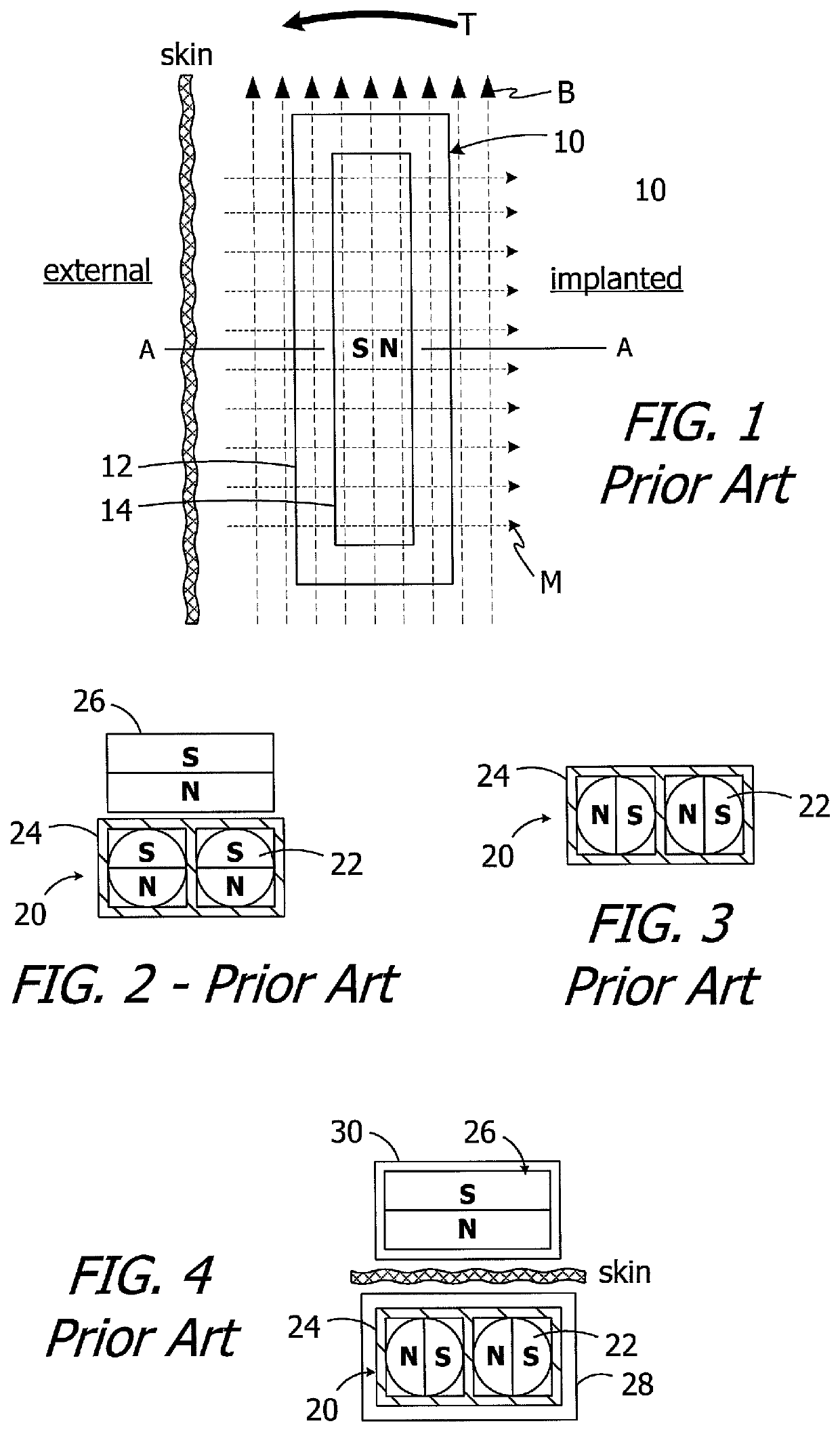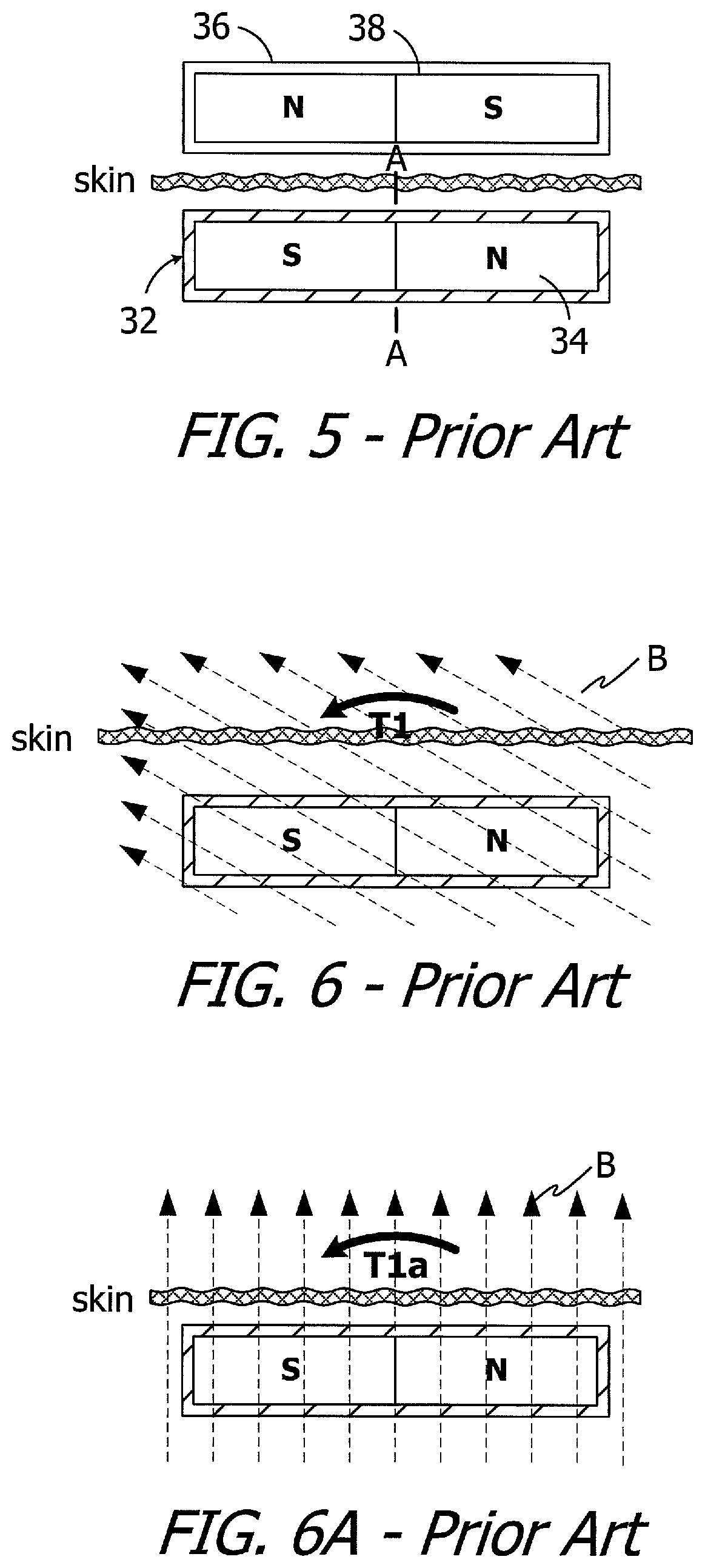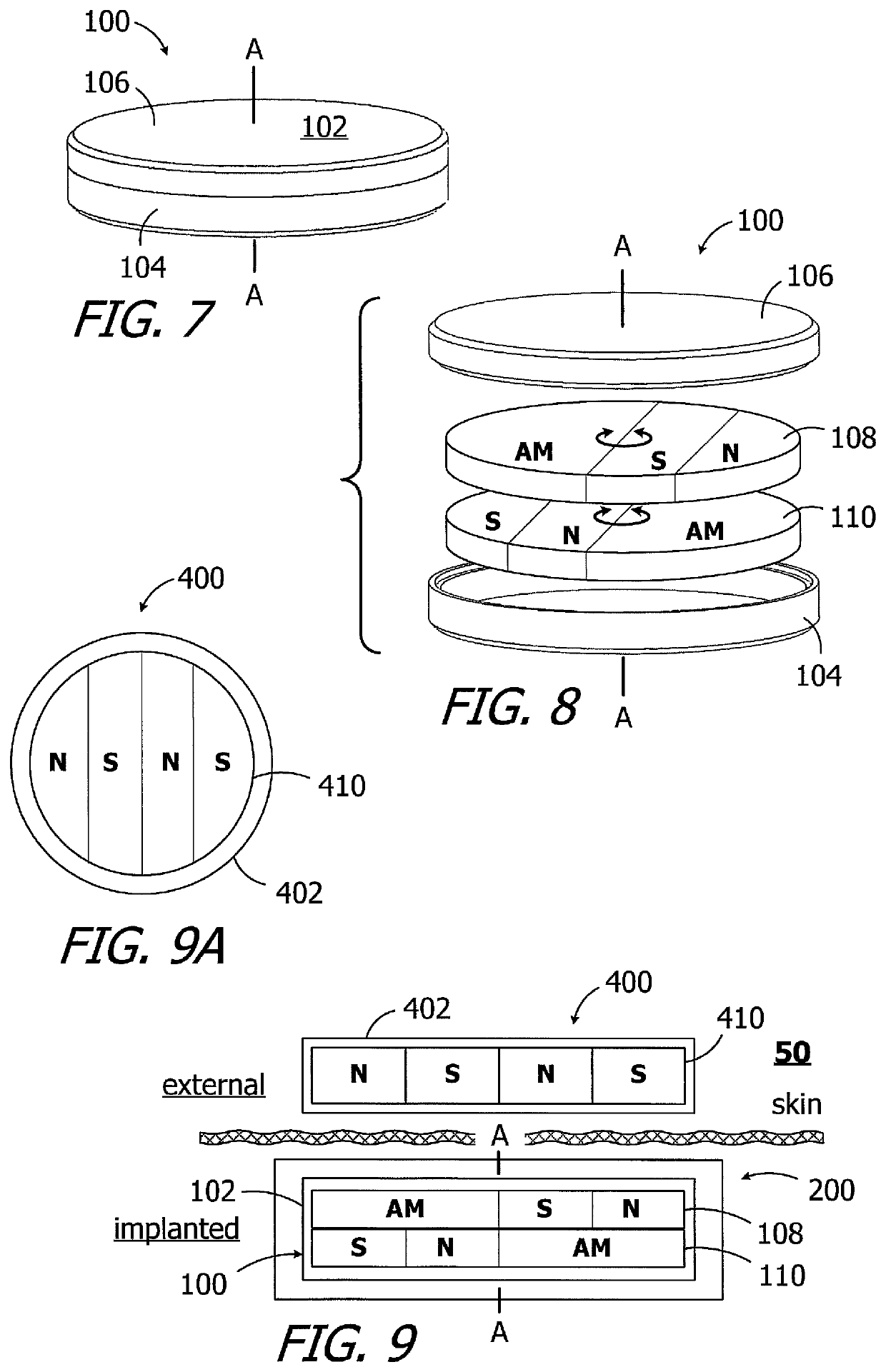Cochlear implants having MRI-compatible magnet apparatus
a magnet apparatus and cochlear implant technology, applied in the field of implantable cochlear stimulation (or “ ics”) systems, can solve the problems of skin flap, discomfort and tissue necrosis, and the magnets are not compatible with magnetic resonance imaging (“mri”) systems
- Summary
- Abstract
- Description
- Claims
- Application Information
AI Technical Summary
Benefits of technology
Problems solved by technology
Method used
Image
Examples
Embodiment Construction
[0048]The following is a detailed description of the best presently known modes of carrying out the inventions. This description is not to be taken in a limiting sense, but is made merely for the purpose of illustrating the general principles of the inventions.
[0049]As illustrated for example in FIGS. 7 and 8, an exemplary magnet apparatus 100 includes a case 102, with base 104 and a cover 106, and first and second disk-shaped magnet members 108 and 110 within the case. The exemplary case 102 and magnet members 108 and 110 define a common central axis A. The magnet members 108 and 110 are freely rotatable about the axis A in either direction relative to case 102 over 360° and, in the illustrated implementation, are freely rotatable about the axis A in either direction relative to one another over 360°. As used herein, the phrase “freely rotatable about an axis” refers to an object that can rotate about an axis relative to an adjacent object, albeit with some friction between the two...
PUM
 Login to View More
Login to View More Abstract
Description
Claims
Application Information
 Login to View More
Login to View More - R&D
- Intellectual Property
- Life Sciences
- Materials
- Tech Scout
- Unparalleled Data Quality
- Higher Quality Content
- 60% Fewer Hallucinations
Browse by: Latest US Patents, China's latest patents, Technical Efficacy Thesaurus, Application Domain, Technology Topic, Popular Technical Reports.
© 2025 PatSnap. All rights reserved.Legal|Privacy policy|Modern Slavery Act Transparency Statement|Sitemap|About US| Contact US: help@patsnap.com



